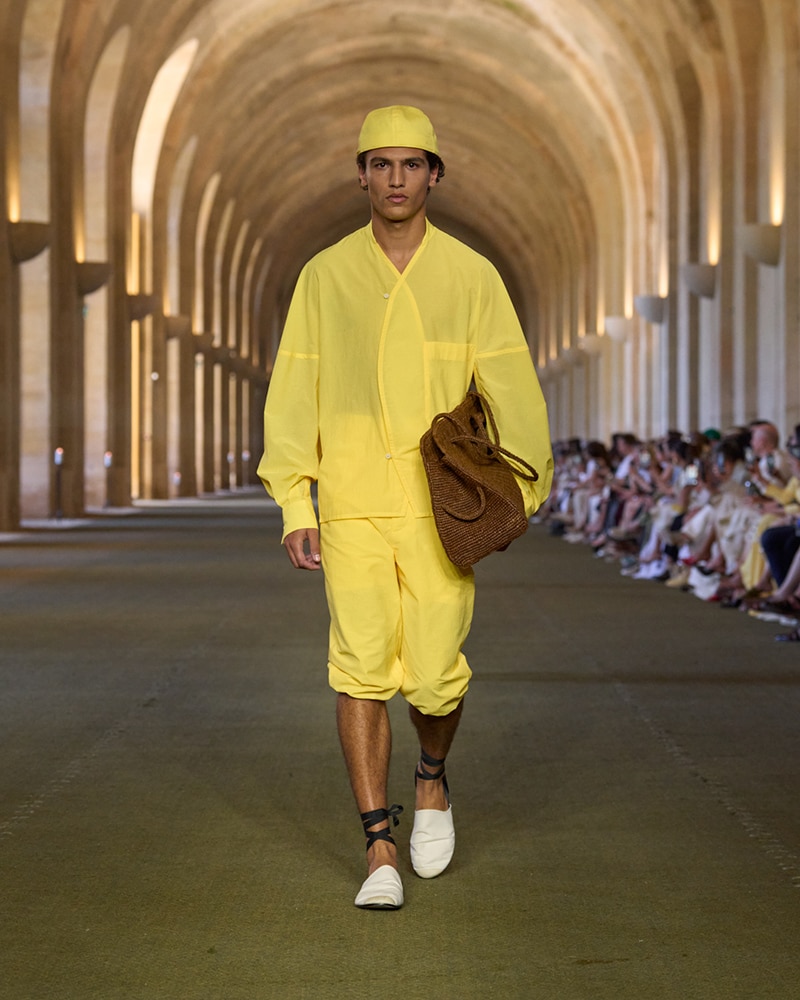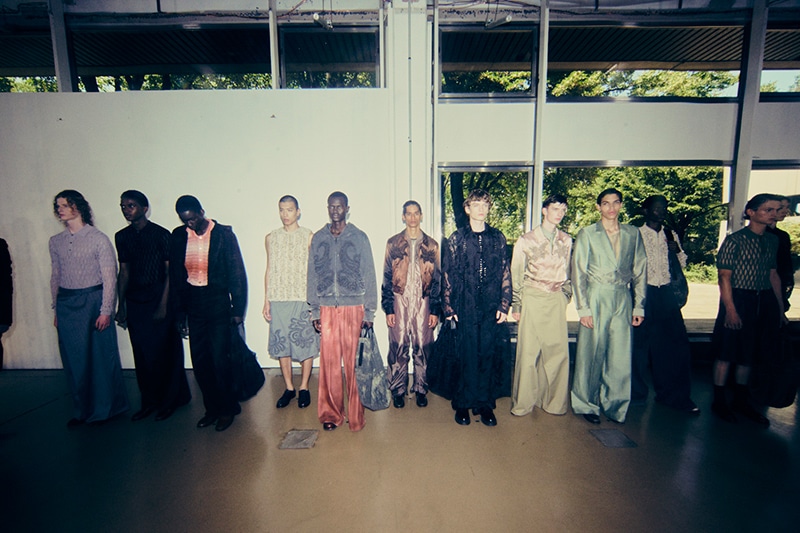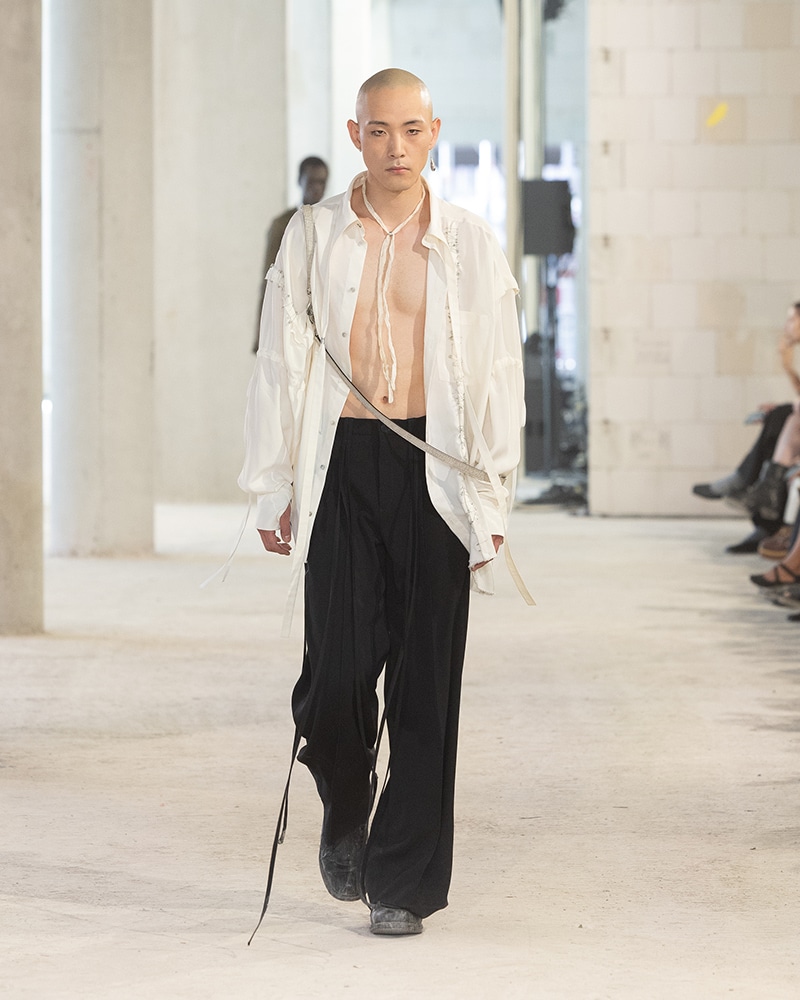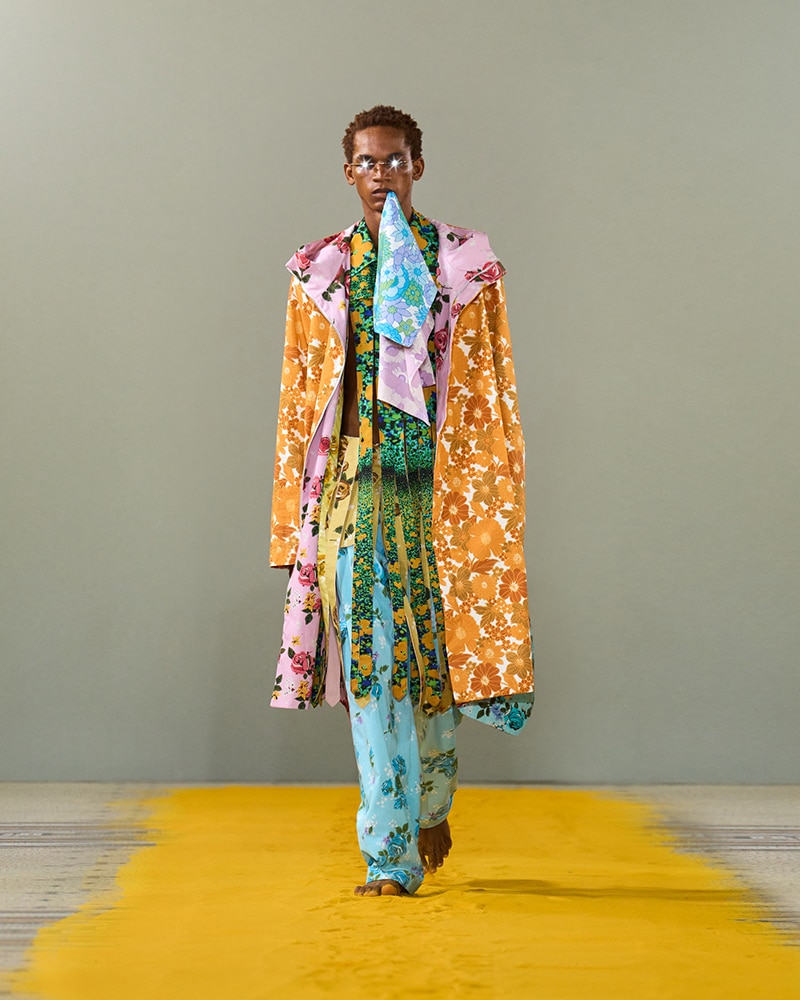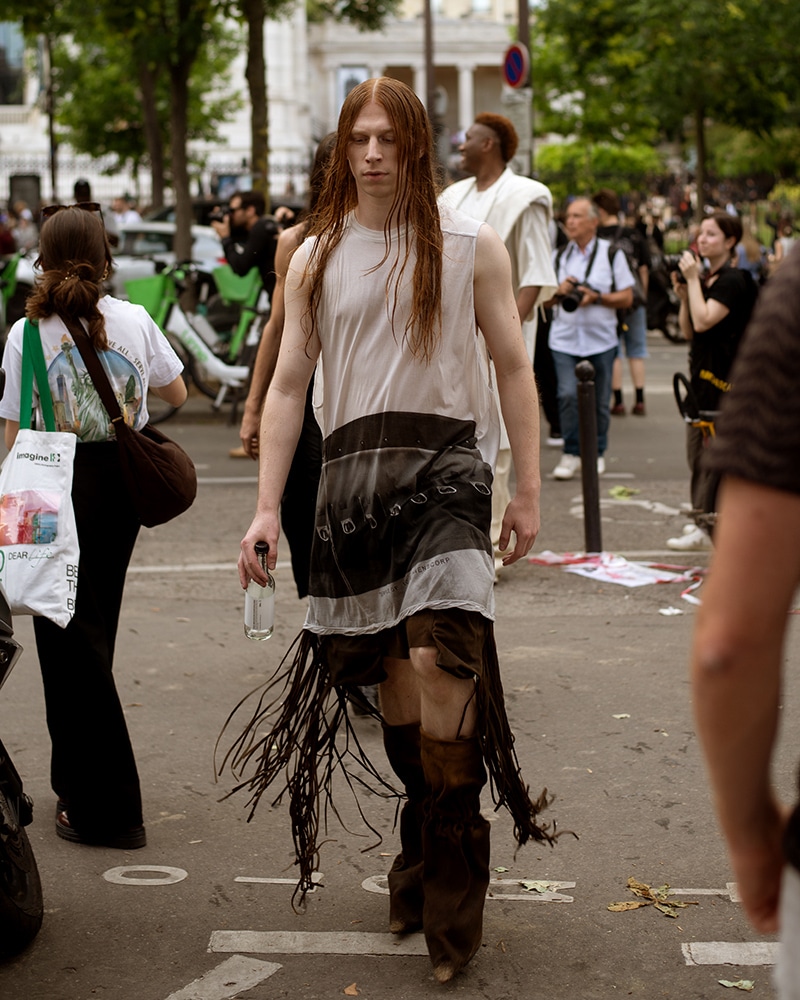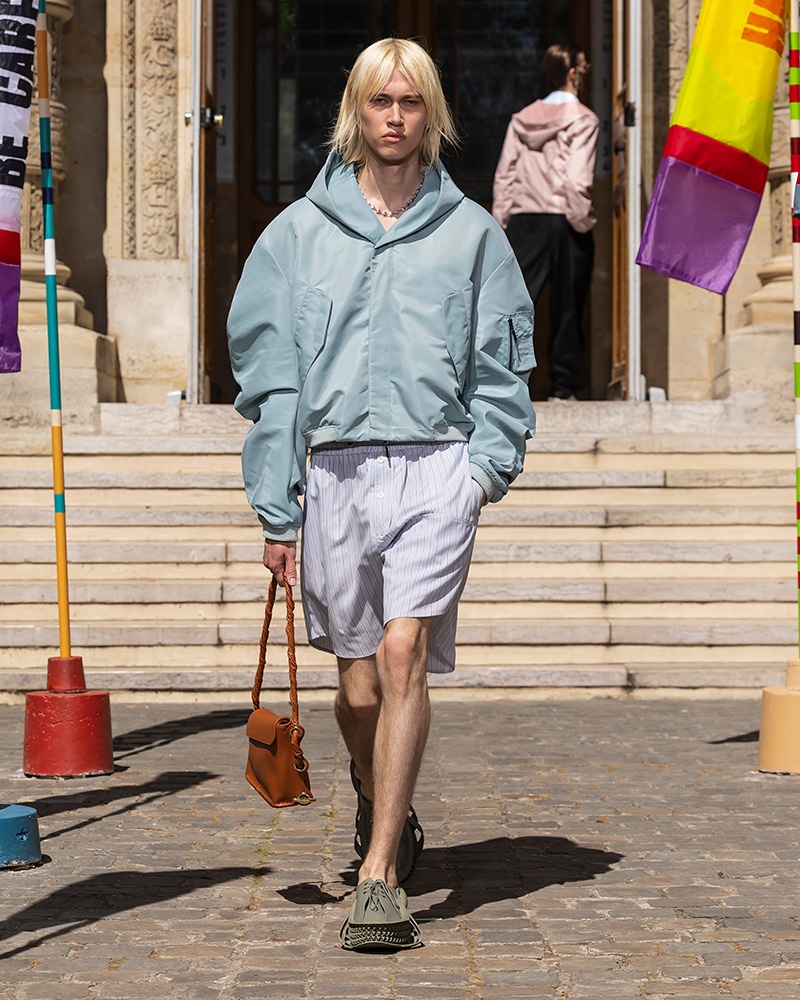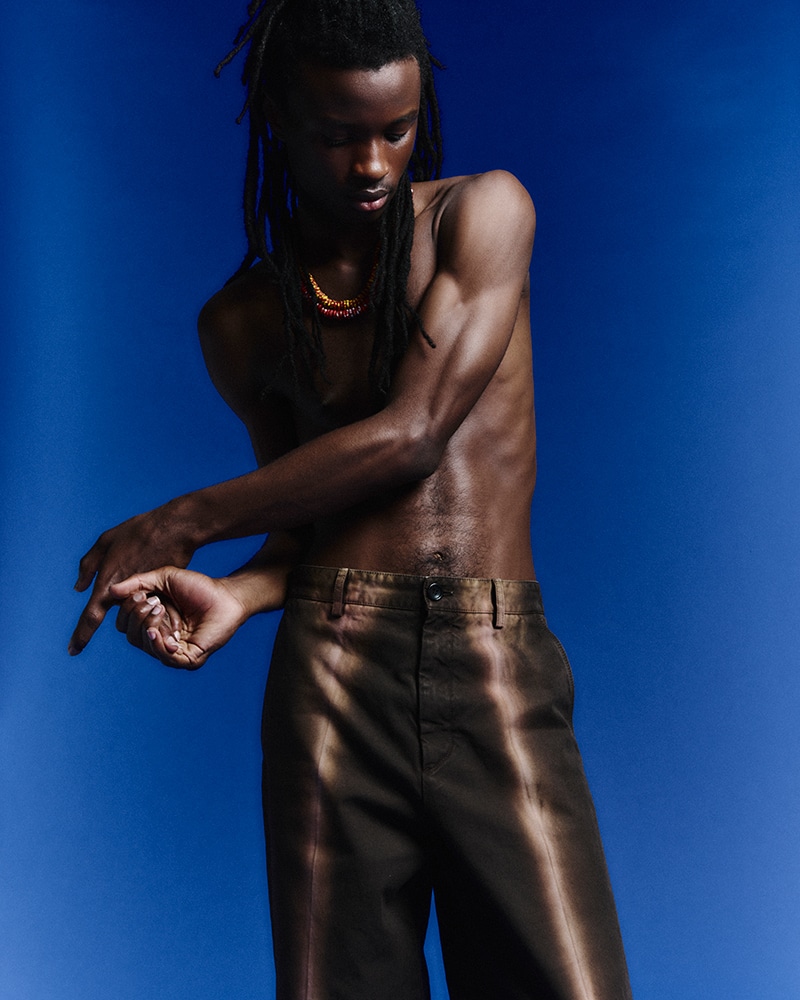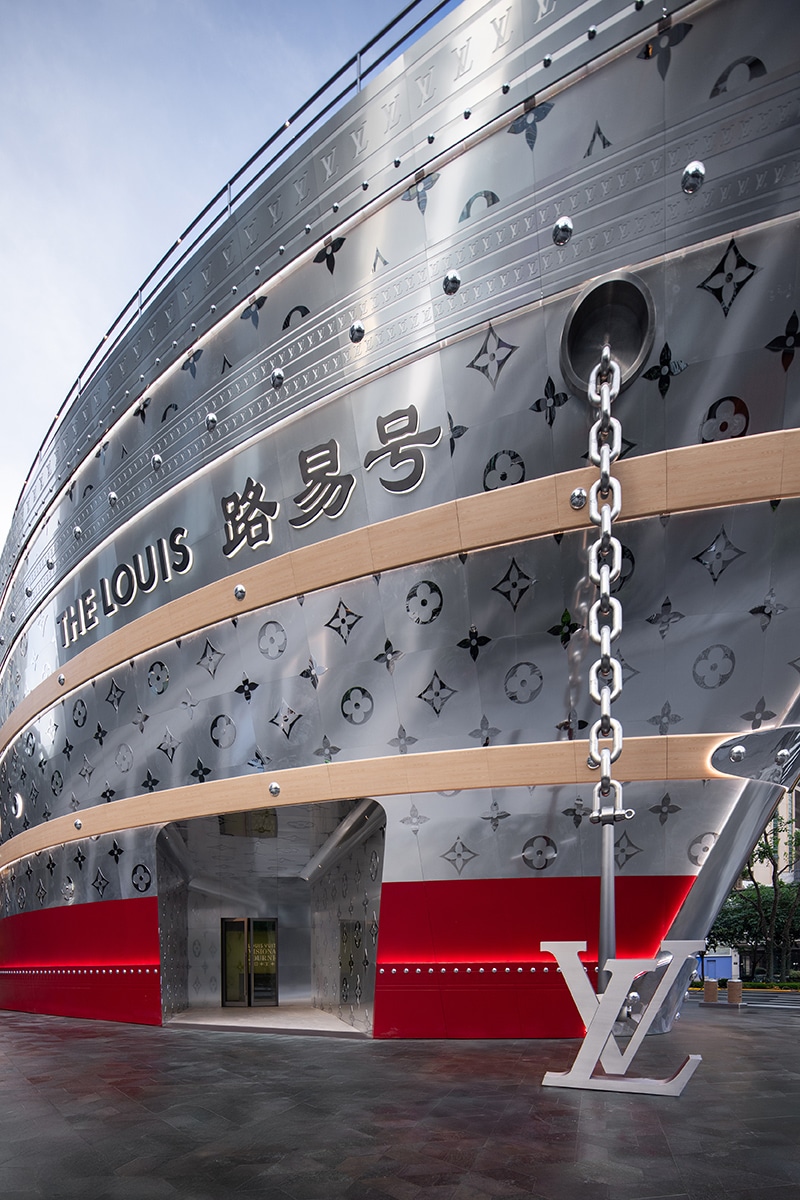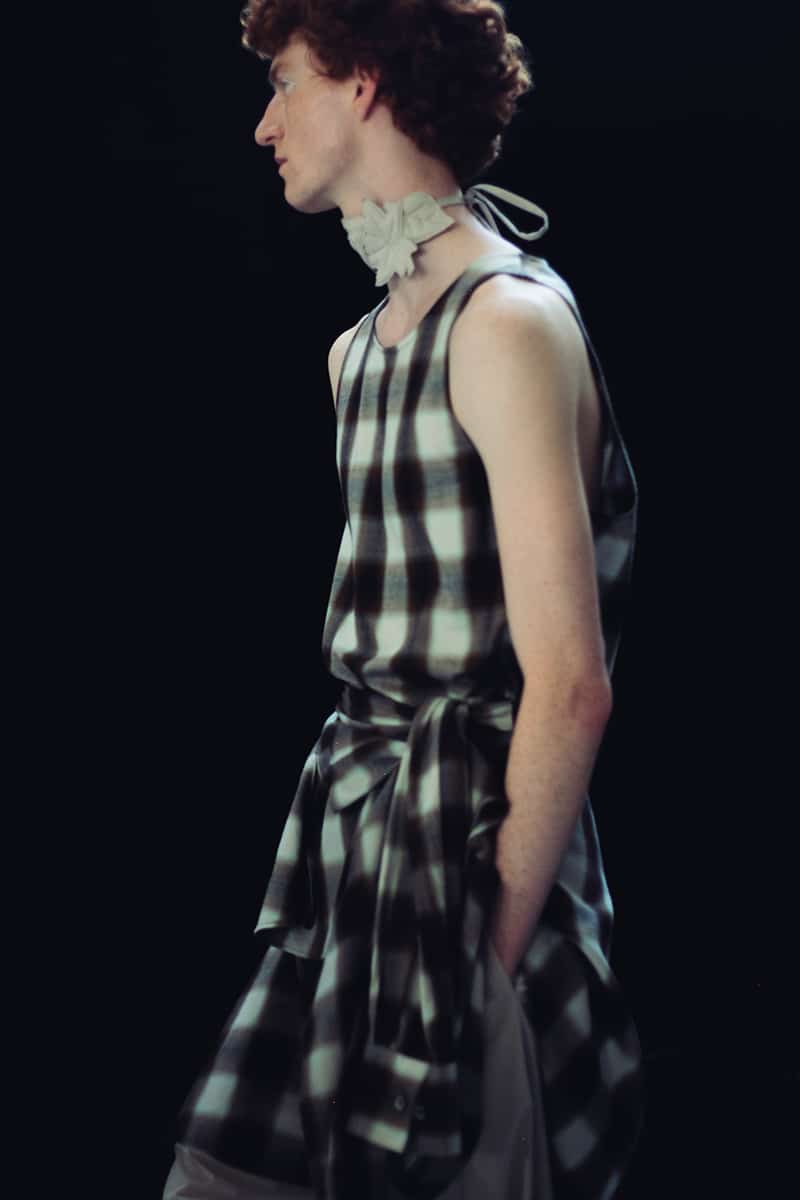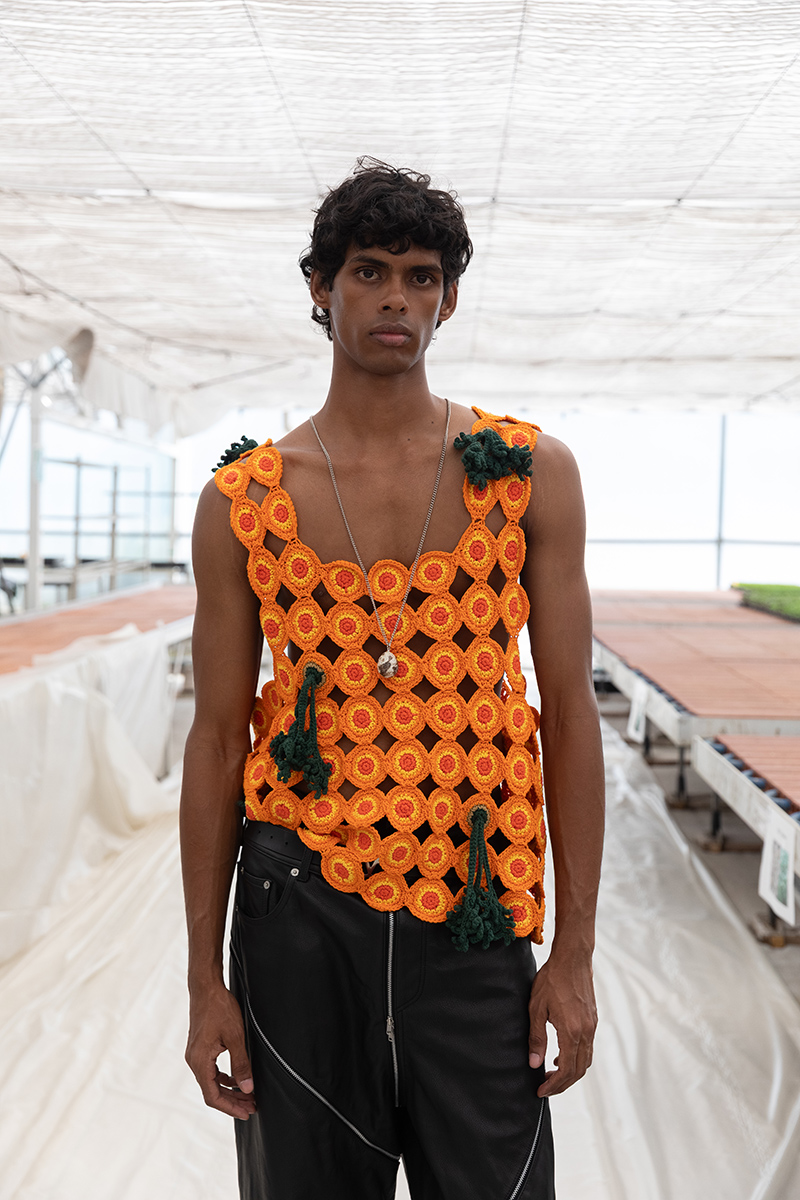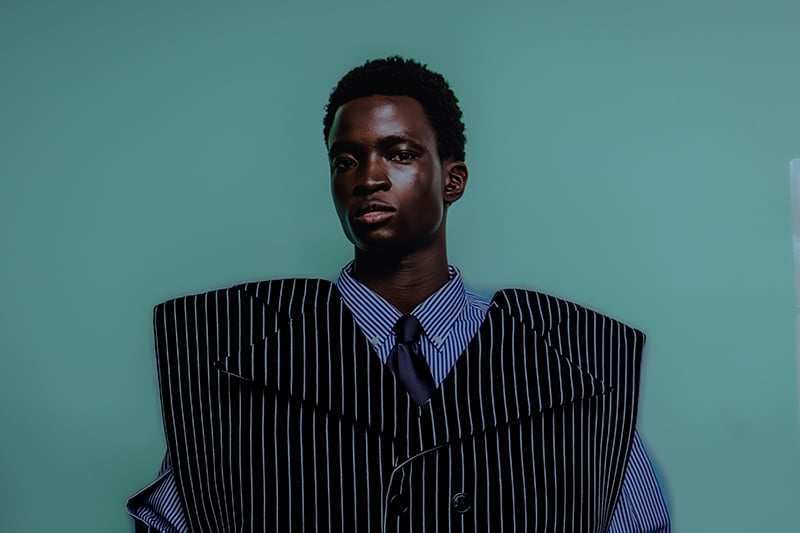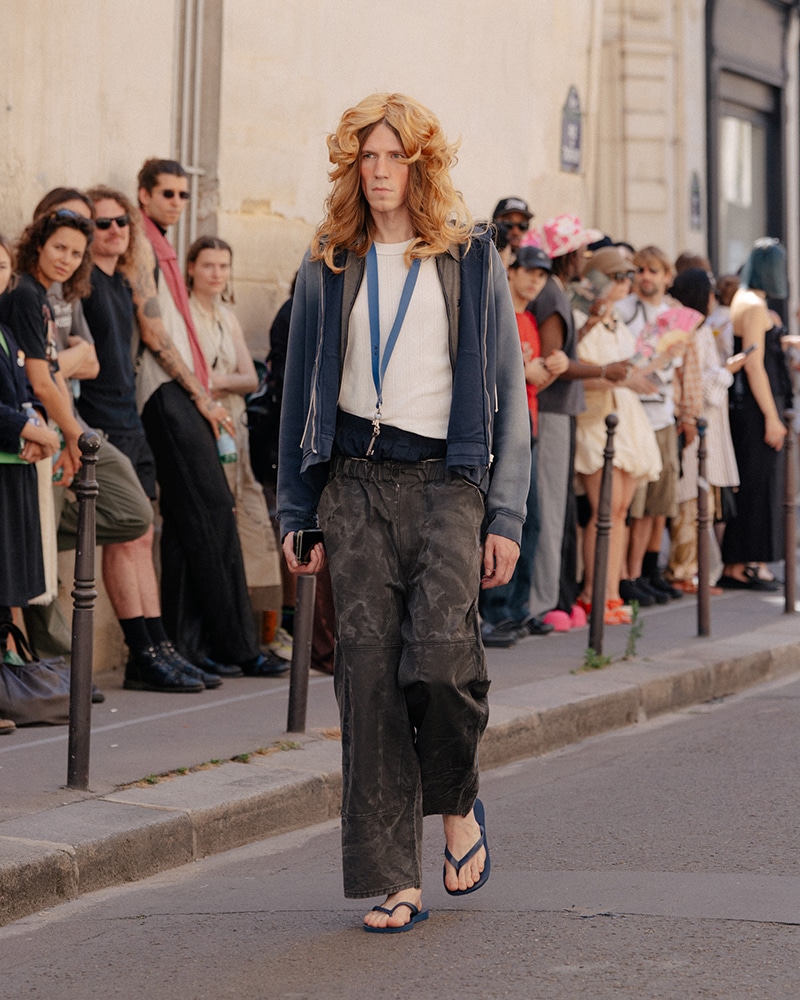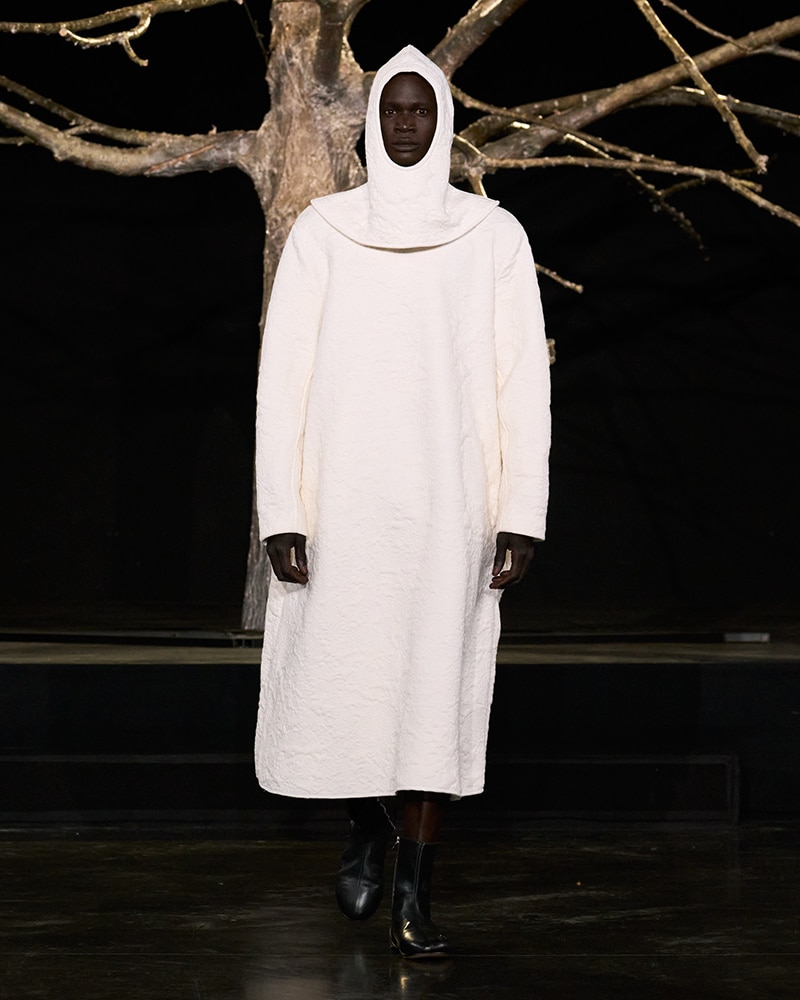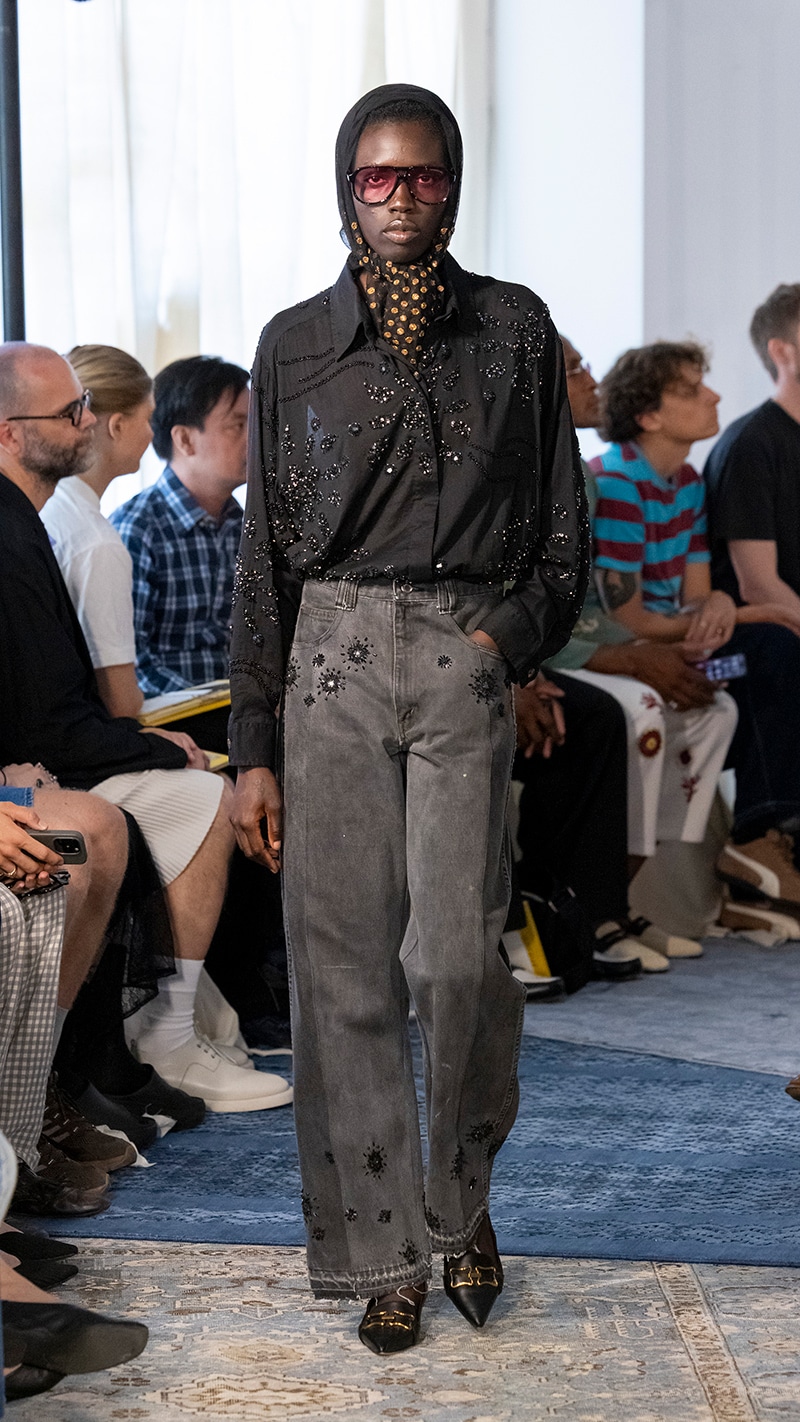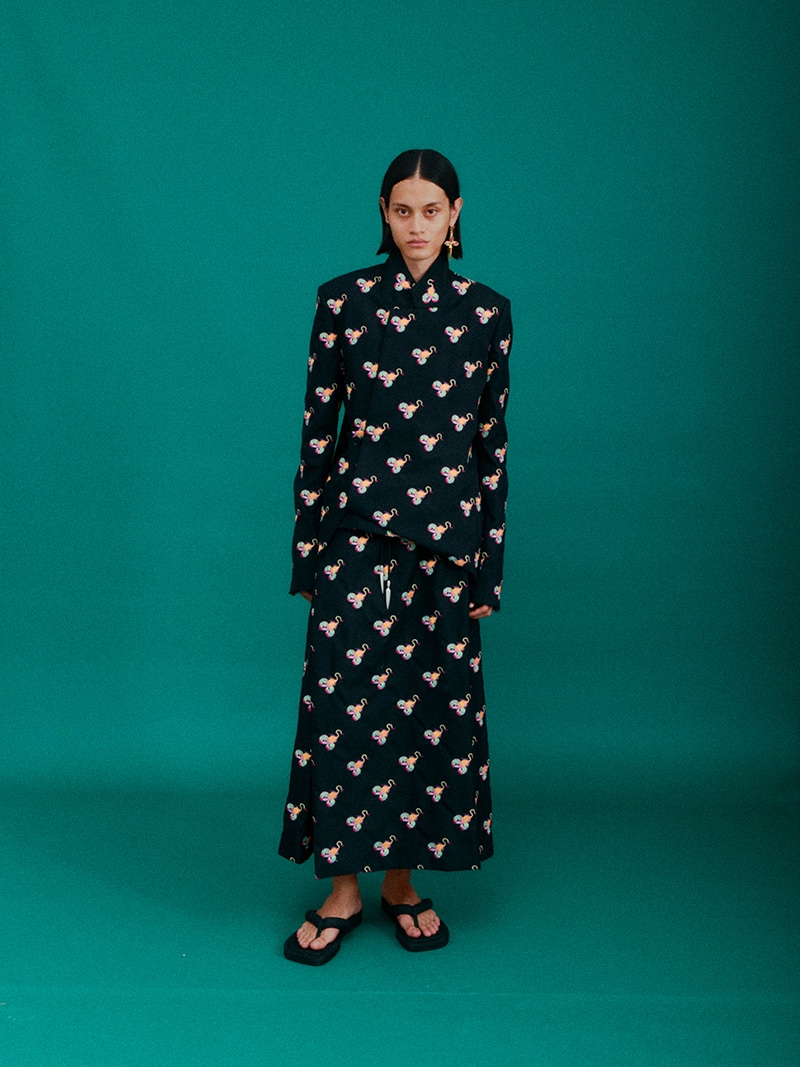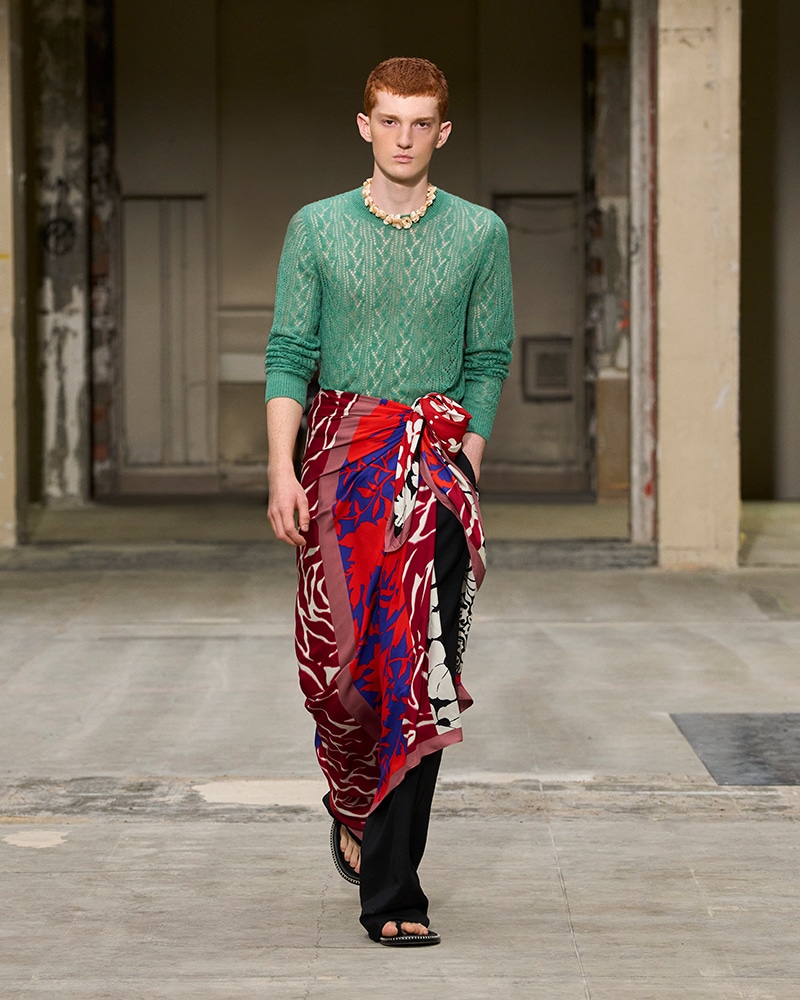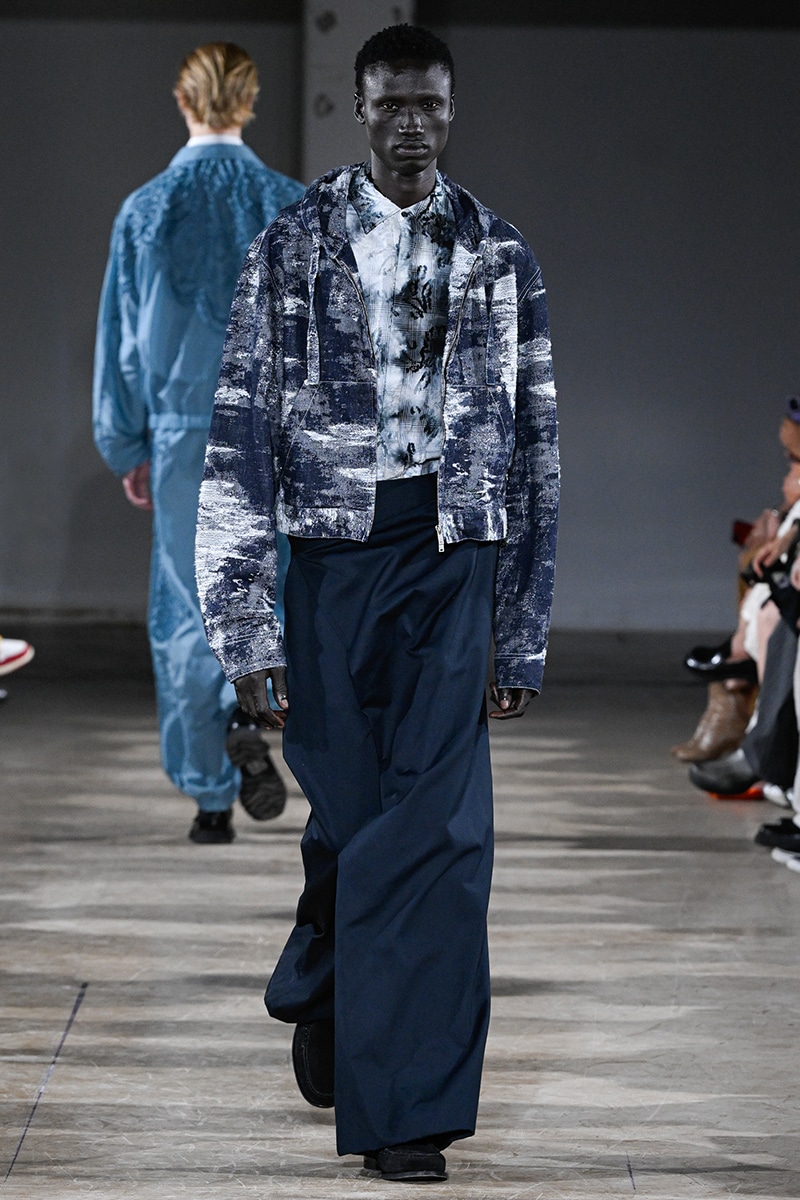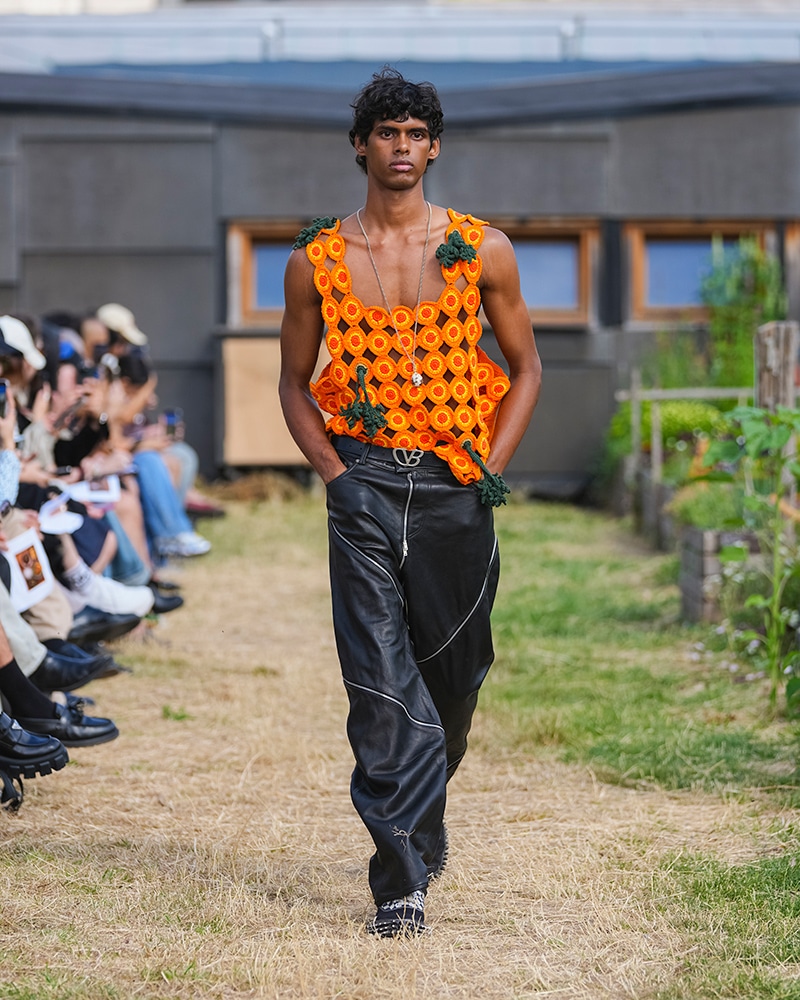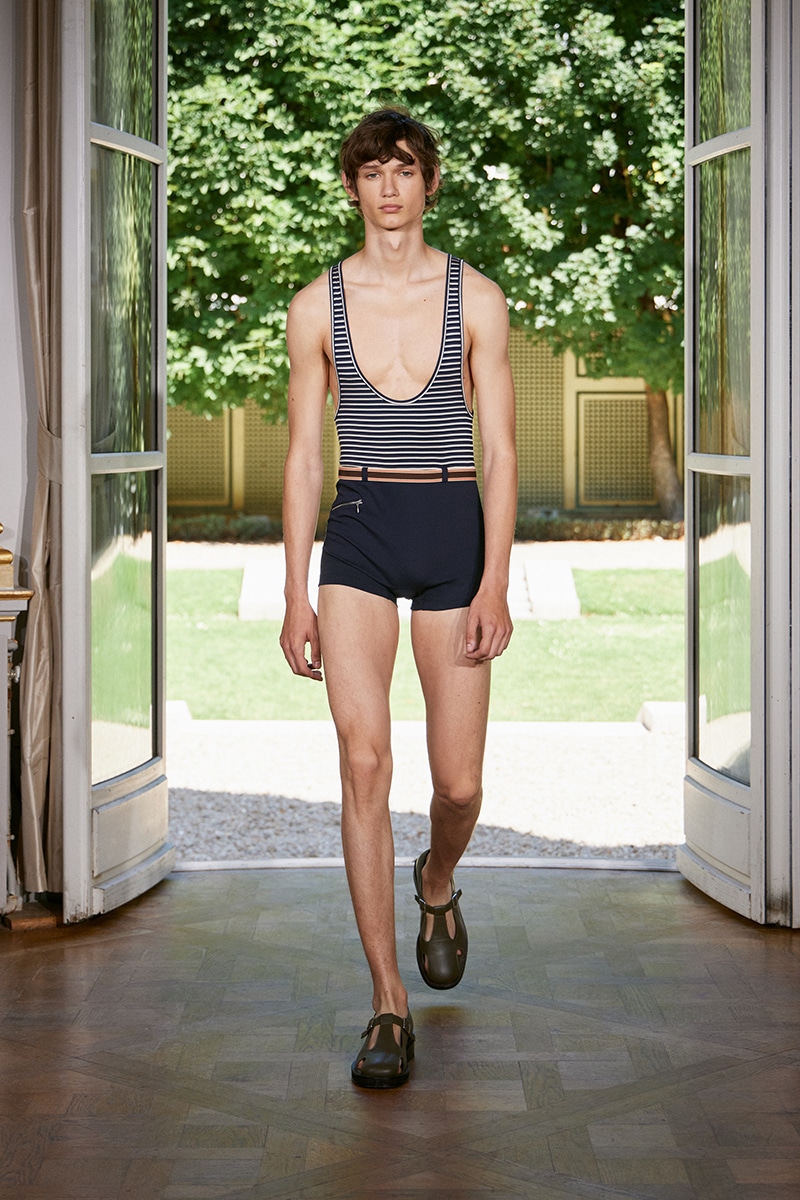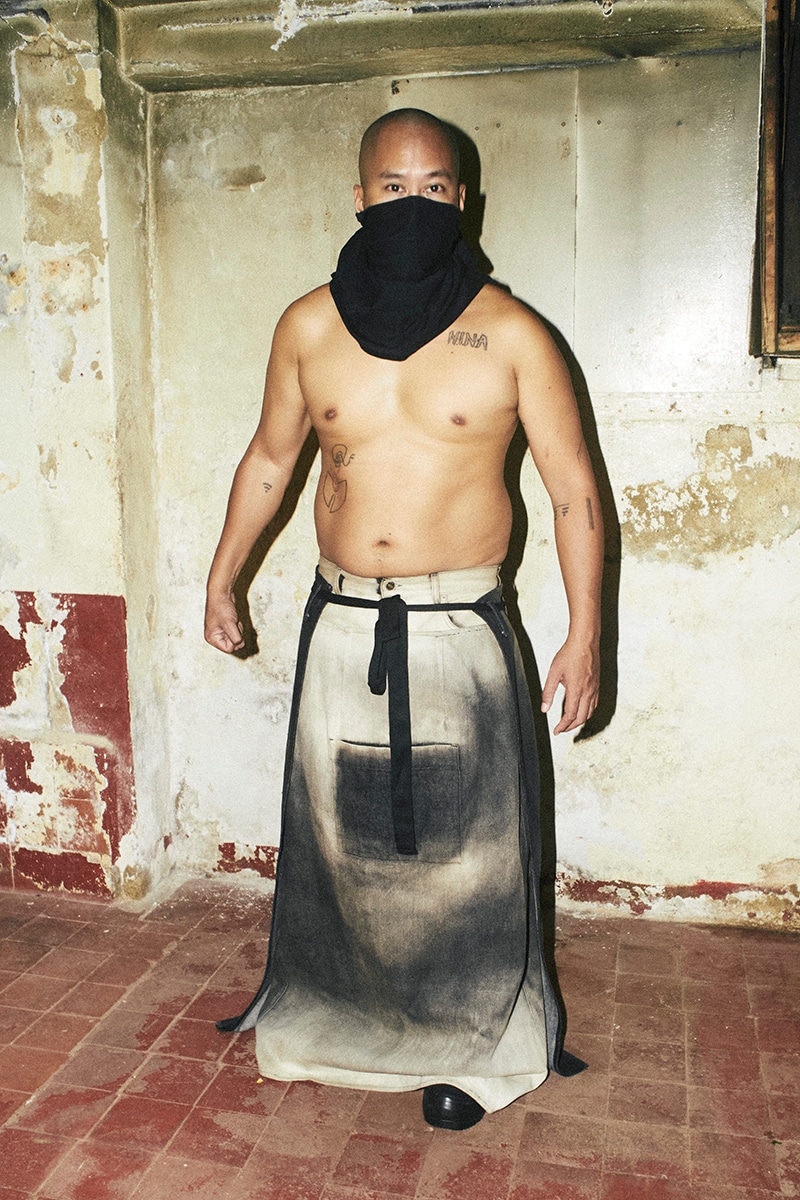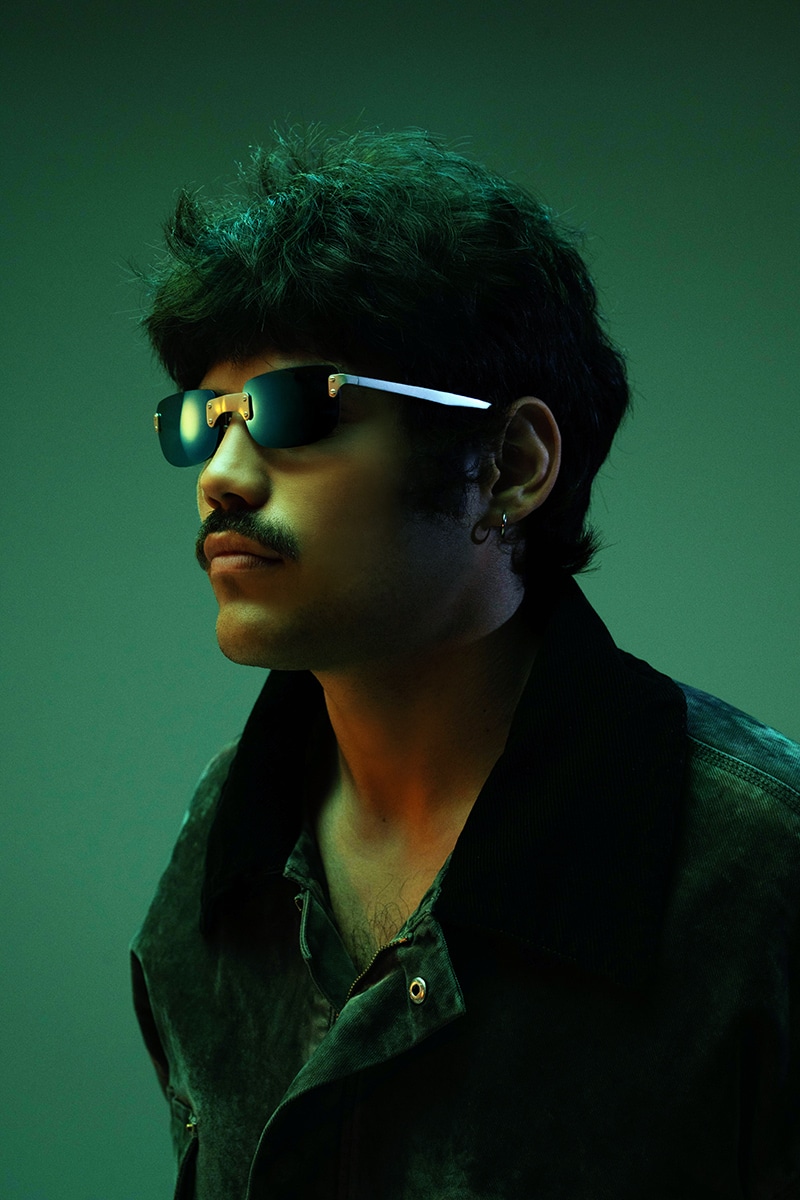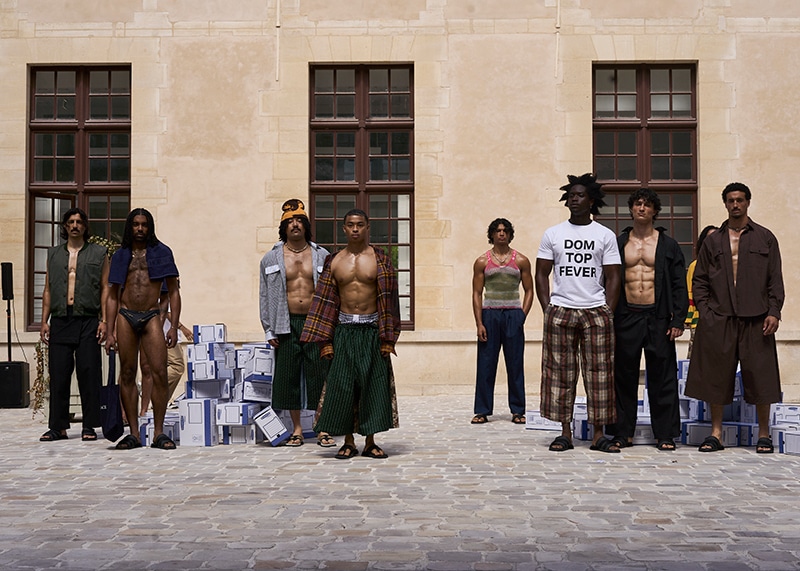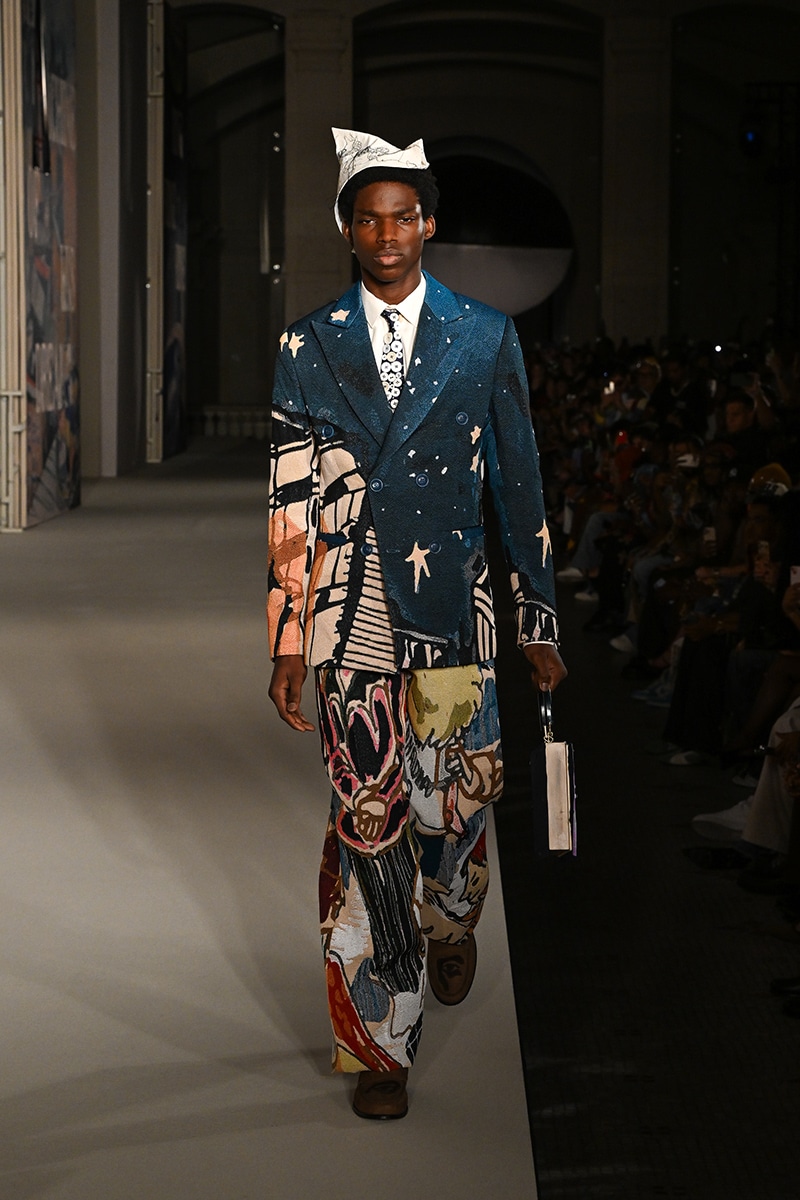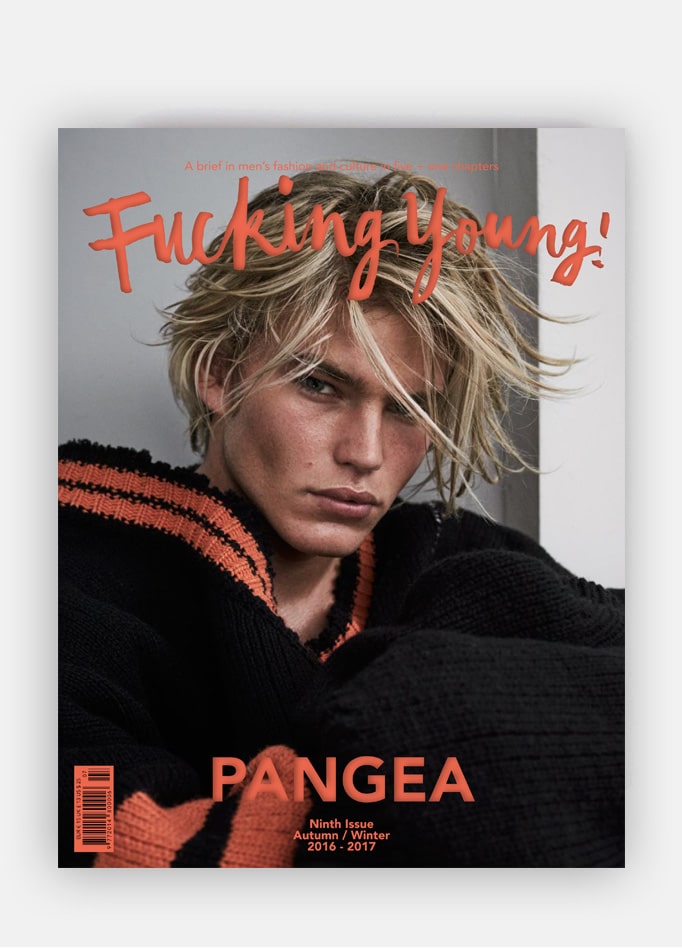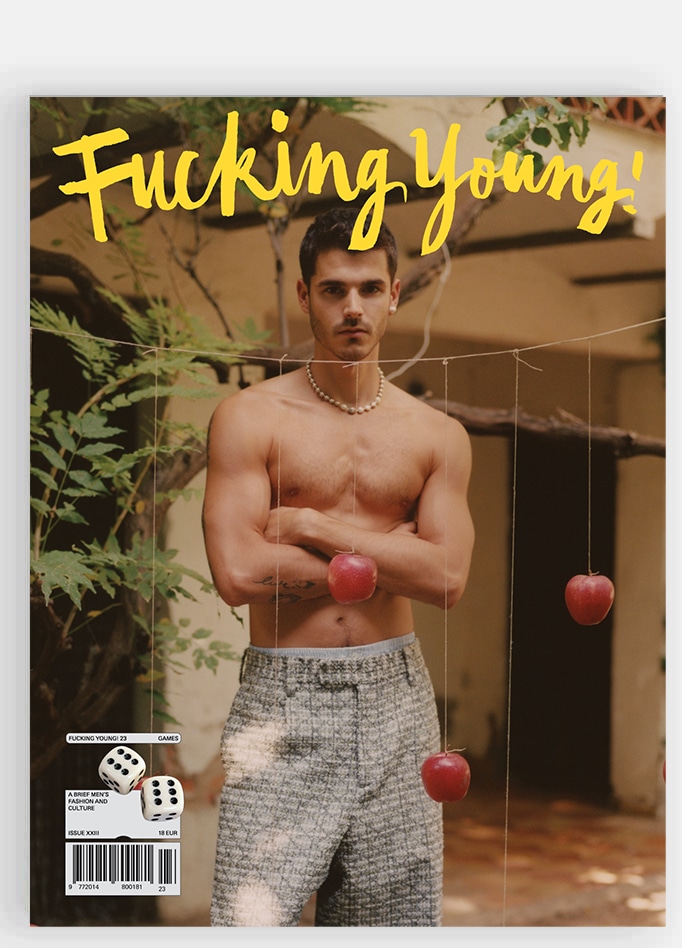


Charlie Engman is a New York City based photographer and his clients include Urban Outfitters, I-D Magazine, Vogue Brazil, Marie Claire China and Collina Strada. He photographs fashion within contextually absurd settings while his personal work –mostly about the human body- evokes a high level of emotional energy. He’s one of our favourite artists and we had the opportunity to speak with him on the release of the latest Eastpak campaign, which he photographed.
In a phrase, who is Charlie?
Oh no! I don’t know! Charlie is just a normal guy who is really excited to look at things and experience them, and specially to share what I looked up and experienced with other people.
If you had to describe your own work in three words, what would they be?
Mmm, taking a different approach maybe I would say: texture, material and color. So, they’re no adjectives, they’re elements in my work. I think they’re most important.
How did you start taking photos?
I actually was at Oxford University studying Japanese and Korean languages… I was studying very hard these languages and it was what I Liked, I really liked it, but it wasn’t giving myself a lot of time to explore the creative side of things. So I started taking photographs, on the side, just to keep my brain active and keep thinking about creative things and visual ideas, but I never thought anything about photography really. And eventually, I started to take pictures that for me were notes and sketches. Then I realized “ok, there’s something that I’m interested in here”. At first, it was something that was really about the instant, about how I could preserve and realize an idea, and keep it for later to think about. The more I did this, the more I realized how exciting it was and how many layers there are in a photograph, how much potential there’s in that very seemingly and simple action of pushing a button and creating an idea.
What is photography for you?
For me photography is so vast. It’s very wide, and very plastic. I mean it can be used in many different ways. You know, there are so many different applications for photography. It can be about capturing a moment or remembering, it can be more like a memory or more like a painting. You can use it more in a paintingly way, or it can be more like a sculpture, you can kind of create depth or a flat mess…
For me, photography really is just a way of focusing. Focusing on what you’re looking out, how you can kind of view the world visually.
And fashion photography?
For me, fashion photography is also very wide. Generally, I think fashion is about presenting some kind of style. And for me that could be how you wear something o what you wear. And not even necessarily wearing, it’s also about how you present yourself. So you cannot be wearing anything and it’s still a fashion picture maybe. Or even a picture of an object, if it’s kind of presented in a certain way that had given it attitude, for me it can be considered almost a fashion photograph. So, of course, there’s the kind of photographs that we see in magazines. Ok, there’s hair, there’s make up and there´s glamour. This in one way of fashion photography, and maybe this is the common way of fashion photography. But, for me, I think as long as you are really kind of presenting a kind of style, that could be fashion photography. So, for me, I’m very generous about it. I think if you feel like you’re showing something about you or a proposal about how to dress or maybe even just how to behave this is a fashion photograph.
Despite being a latecomer, you have managed to carve out quite a name for yourself in the competitive world of fashion photography… How was it?
I just feel really lucky. I started with artwork. So, my photographs were very much about it. I didn’t really think about a commercial or fashion context. My work was very much about the body and texture, material and gesture. And these are all things that are very important to fashion photography. So I started a few projects with some friends. They were doing some fashion things and I said “ok, why don’t we collaborate and see what happens”. And the collaborations were all very fun and exciting, and we just had fun, we didn’t think very hard about it. Of course we thought about it, but we didn’t push it on anybody. It was something that we did, and it was very well received. People really liked it. So, I started working more with bigger brands, and magazines… I can’t explain it. I really Iove fashion, and I really love photography. So I think this combination is very enthusiastic. If people want to collaborate with me, and it makes sense, I say “ok, let’s do it!” For me, it’s really organic. I never say “I really wanna work with you; you wanna work with me, right? Please, work with me!” It’s not this way. It’s always somehow we see something in common that we can share with each other, and then we say “ok, let’s try”. It’s always in this way. And one thing comes to the next thing… I fell very lucky. And very happy.
Have you a weakness for any kind of situations or people? What does inspire you?
All the time, of course. It’s really normal and boring, but I really like –I always have to- spend some good time walking around, like specially here in Madrid. I’ve never been, it’s my first time in this city. I’m very excited to be here. So, I came here yesterday, early in the day, and I had to have a day to myself, and not talking anybody, not seeing anything… And instagram is so… well, at first I was very nervous about Instagram, but Instagram has been very exciting for me because I don’t have to carry a big camera around. I can just, you know, like how I started with photography, just taking casual notes of things just to keep my mind busy. It’s this way… Now I can just take out my phone and walk around town… I was in the Botanical Garden yesterday, and I saw a beautiful green house with a lot of cactuses and plants which I though it was really cool and I had my phone to capture it. And at the same time, about this aspect, also the Internet it’s, of course, incredibly useful now. I spent a lot of time just looking at anything and anything. A lot of time on Google or Tumblr, seeing what other people are looking at, what are exciting people doing right now. So, this combination of what’s happening in the reality and what’s happening kind of in the air… It’s very normal, everybody does it, but this is how I work.
How Charlie work as a photographer? Tell us a bit about your process. Are you trying to capture a special feeling?
So, for me, I like to really response to the situations. I don’t really have one way I work. There’s lot of trans in the way that I work. Sometimes I’m really in the mood of color -like right now-, so I wanna work with pieces of colors. What I love about photography is that everything becomes really flat in the picture. So, you can really make new relationships, that maybe didn’t exist in reality, or maybe yes, but you couldn’t really see them. So, my process is trying to find a good way to creat these relationships between things that maybe don’t have a real relation in real life, but somehow through photography or through kind of giving them a frame or giving them some kind of flat relationship they suddenly speak, have a conversation, you know… And this is really when you think how could we make things kind of make sense together, how could they talk to each other visually. And then, when you’re dealing with people or you’re dealing with situations, or you’re in a location, of course there’s some kind of feeling, a person who’s expressing itself…
For me it’s a mixture of taking the visual of the person, or the personality of the person, or the silhouettes, or the color of the clothes and applying it to that what I’m thinking. It’s like “Ok, this person has a strong energy, so how can we bring other things into the photograph that complement that energy or make a visual relationship of how the people are acting, or how the people look, or what color clothes they’re wearing”. So for me it’s really about, in a sentence, creating visual relationships between things.
What is your method of working on a fashion campaign? How do you come up with the concepts for your shoots?
Again, it really depends on the situation. I like to really response to the material or the presents of something. How’s the object, or how’s the person expressing itself. Or how do we want to express them. So maybe ok, we don’t really know what gonna do with X product, or maybe we don’t like it as much as this other product, but we think this product has a strong kind of attitude that can be brought to something… So, we have to think how do we incorporate that attitude… For me, always because a photograph is visual, I always like to look at something, see what it’s made of, or if it’s a person, how they express themself, and then what we can build from there.
Are you free to choose the aesthetics or have to follow orders from the marketing department or a stylist?
It’s always a balance. But, at the same time, especially with Eastpak, they were very open; they really wanted to work together on something. Of course, we can’t show nudity or we can’t go crazy, so, in this way, I work with the marketing. Because, for me, I can go crazy, I can do really crazy things if you want me to do so. This is a compromise. For me, ok, there are basic rules of marketing that everyone have to live with, but I think I’ve been very lucky with all my clients, they had been very open, we could really discuss ideas. I always present too many ideas at the beginning, and then we say “ok, this one gonna fit more with what we like, this is interesting, but maybe we can do it in a different way, or maybe we only show this part of it, or maybe we can crop it”… I’ve been very happy, it was very kind of free.
What is the message you want to convey with fashion photography?
For me, I don’t really make so many distinctions between fashion photography or personal photography, or stylist photography. For me, it’s all photography. Like I said, photography is a way of looking at things. For me, I just like to propose different ways of how you can look at something, or how you can present something. Both ways, so how you can look, and how you can show. I just like to try different ways of this. It’s not a specific message. It’s really how do you wanna look at something and how do you wanna show something. Each project is just a proposal.
The models are natural in your photos, no forced gestures than usual contortion… Do you look for it?
Yes, of course. I spend a lot of mind/time in my brain creating the relationships between visual things. I really like to let the people in my photographs really express themselves. I’m not there to make up a character. I’m there to say “ok, this is your character, let’s show that character in different ways, how can we express it”. If I have someone like Miranda or Than or Julia they have really good energy. Miranda is some much energy; we had the picture with the shark… We said Ok, we have a funny shark, what can we do with him? She was really like “I’m getting in by the shark”, she was really having fun… And that’s what I want to show in those photographs, we’re having fun and this is how you wanna show yourself, so let’s play with it.
What are the instructions you give to the models when they pose?
My instructions are “be as natural as you want”. If you feel like you’re making a photo is not good. I always talk to my models while we’re photographing, we’re always pulling ideas to each other… Like we did with Miranda, “maybe we could pretend the shark is biting you”… It’s this kind of idea of an activity, but never let to express yourself… I just say “be really natural, don’t wait for me to take the picture. Just go, do something and I’ll take the picture. And if it’s not working somehow, we’ll try something else”… But I never say like “smile”, it’s always natural.
You work with numerous fashion clients, what are your favorites?
Oh, I don’t know. Always it’s totally different. Of course I love the clients that really let me totally be me. ‘Cause I have a really strong identity, and I want to maintain it. I really like to adapt to and respect the client’s identity, but I try to figure how can I have my identity inside of their identity. Of course I really love the clients that say “ok, we like your work, we trust you and we want to work together. So, do what you wanna do and we’ll bring our own ideas and own materials”. So I can’t name one, there are really different clients, and they’re totally open, which I’m very happy about. There are a lot of people that really want to try new things and explore a collaboration.
There is quite a selection of work on your website, how do you feel commissioned work differs from your own personal projects?
Of course there are differences… Like I said early, I can go crazy, I can do really wild things. Commissioned work is always collaboration. So, you always have to take another person’s ideas on board or if it’s fashion there’s some products you have to photograph and I don’t necessarily have a choice about this. In my personal work I’m in control of everything, I can do everything I want, I can put together everything. I can spend as much time or as little time as I want. Commissioned work is always a little bit about compromise. But I think this is a great thing. I think very good work can come out of compromise, because you have to think and come out with new ways of thinking and working. So, for me, that’s the main difference. One involves some very obvious compromise and one is totally free. Because as I said early, there’re lot of clients in commissioned work that really give freedom, so there’s a lot of overlap for me despite the differences.
It seems that in your personal photography you prefer to work closer to home… What’s the importance of the environment in your photos?
For me, as I said, I really react to the situation and hunt. If I’ve been brought by Eastpak to Madrid, for example, there’s something that I can react with that. But, when I’m working for myself, I’m in my house, in my studio or in my neighborhood. And that’s what I’m thinking about, that’s what I’m looking at, that’s what I’m dealing with… So, for me, lot of things happens inside, because I’m inside. I like to collect things, I like to have a lot of images on hand and objects around, so for me it’s often like “oh, this thing is right next to this thing, oh that’s cool”. Or “why don’t we move it over here, or maybe It will be nicer outside”, so then I take it outside. But, for me, I really like the urgent, the immediate quality of photography. And so this is kind of comes into the location as well, like “it’s here, and here, ok, it should be here”…
What was your bodies’ series about? Why your body? Explain me the concept of portraying the human body as both a static impersonalized object and as a human being. You’ve talked about its dual function as a utilitarian object and emotional signifier…
I actually have a background in performance and dance. I used to be a dancer. So everything to me is always back to the body. Everybody has a body, everybody lives through the body, so, to me, everything somehow relates body. Even if you’re looking at a picture of a fruit or something. There’re curves and there’s texture or something that either is like the body or it’s very different from the body. But it’s interesting because there’s a difference. So, for me, everything is always coming back to the body, because it’s where everyone experiences the world, the body is the media through which everybody experiences everything. So, I always try to think on this way of, you know, how do different material, or how do different textures create that relationship between the body and the rest of the world. So, is in this way that I really view the body as an object, the most exciting object. Because is both, something very visual, and then also something very emotional. It can be both, something you can touch, something you can touch with, you can see it, but it also has feelings: when you touch you feel something, when you move you feel something, and when someone else moves you feel something. For me it’s everything. It’s visual, it’s physical, it’s emotional, it grows and it changes, so there’s an element of time in it. What I love about photography is that photography is the same. Photography can kind of be anything. And so I really like this relationship that put the two together, showing the different sides of everything, and exploring kind of what it’s mean to be both an object and something that’s moving, and something’s thinking, and also feeling or not feeling. It’s photography of my body, but stills very detached for me, it doesn’t look like me, it looks like a shape. So, I try to think of the body really like a kind of architecture through which we experience the world.
You said you’re very focused on filling the gap but in the stories, but every picture of you sends a special message…
This is what I love about photography. Because it’s something real. Every time you take a picture of something, it’s real. You know, even if you use Photoshop or something after works, the base is a real reality. It’s so cheesy, but everything has a story, everything comes from somewhere. What I really like about photography is that you can really let something talk about itself. Of course, sometimes I can create my own stories and have fun with them, but at the same time I only take photographs of things that talk to me, things that have a story themselves. Maybe it’s just the material that makes me think about many different things. For me, it’s letting objects, or people or materials, like letting them kind of explain themselves and kind of helping that with photography. Photography is just like a megaphone; it’s like making something that already exists showing it bigger, like repeating it. It’s repeating something because I think this is worth repeating. This is something that I think is important and I want other people to see it. I want more of it in the world.
Why texturizing your photographs with collage, bright colors, clashing patterns and geometrical shapes?
For me photography is a tool, it’s a material. I’m not the kind of photographer who is like obsessed with the moment, obsessed with documenting. To me everyone looks at things in a different way. Everything always changes, so I’m not trying to be authentic, I’m not trying to say “this is how something really is always, this is objective”. I don’t believe in that. For me, it’s really like “ok, this is an object that I’ve created, this is an image, and images can be manipulated. They can be changed, they can be cut”. The frame is something that someone made up… I don’t know how to say it. A photograph is a rectangle or a square, like Instagram. That’s made up, that’s not the real frame. That’s just something constrained. So, for me, the frame is the material, but why do I have to limit to a frame? Maybe I can put two pictures together and create some kind of object.
Let’s talk about the Internet. What’s for you the link between art, contemporary photography, fashion and Internet?
I think a lot of people sometimes are worried about the Internet. Or it’s too much information, or it’s too simple, or it’s not deep information, or it’s too quick, like Twitter, everyone has to talk in a short amount of time. But for me it’s super exciting. I think it’s great to be able to have a feeling about something, instantly. And also to be able to have access to look at everything and really see what is this that you really like to look up or what is this you don’t want to look up. I think Internet is so vast, there are so many things you can do with it. It’s exciting. I think accessibility is the most important thing. The most important thing is that you can see it and you can try it. And this is what I love about photography, because you push your button and voilà (of course there are many things that go into photography, you have to learn how to use the camera, etc.). But at the core of photography it’s a very simple action, and this is what I love. Everybody now is in Instagram, or has a phone or a camera somewhere. Everyone has it now, pretty much, and this is what I like, because everyone can try, and everyone can show. And everyone can look as well, because there’s a way of sharing it. So, I think it’s really a good thing, an easier way of communicating and learning.
So, you’re a fan of Instagram. Do you think it could be art in mainstream?
Sure, why not?
What do you intend as photographer?
To me, I want to keep looking, I wanna see everything. I would love meeting people, and I love seeing things, and photography is perfect for this. You always have to have an interaction with people, and you’re always looking at stuff. So, for me, I just hope I don’t get bored. But the world is huge, so, I just hope that I never stop getting exciting about looking at things.
What’s NY for you?
NY is great. This is maybe inappropriate, but I view NY kind of like an abusive boyfriend. Like it’s punching you, and it’s hard and you have to escape. And then you leave and think “oh, but he buy me flowers and he’s so nice sometimes, I love being with him”. So then you come back, and then the psycho starts. So, for me, I have a fairly funny relationship with NY. Sometimes it’s really exciting, and like so much what is happening, and I get a lot of inspiration. And sometimes I think, no no, it’s too much, or it’s too egocentric, I have to see someone else, I have to leave. It’s like a magnet; you always come back, ‘cause it always offers you something. But for me, I don’t know, it’s more about the energy and the people there, but I have to leave sometimes.
What was your first photo?
Oh, I don’t remember it!
And the very last thing that you photographed?
Oh, let’s see. It’s on my phone. My last one is this one of my computer’s screen… a Chihuahua wearing a hat.
Who would you like to photograph?
A person? Oh, I don’t know, there are some many people. Right now I’m photographing my mother, a lot. So, I’m really focused on that, and I wanna keep photographing her.
With which photographer you’d like to collaborate?
There are a lot of young photographers I really like, but they’re too many that I can’t tell you.
Have you got any upcoming projects that you’d like to tell us about? In what are you working on now? Tell us about your plans.
As I said, I’m photographing my mother a lot. So, I’m really excited about this project. She has such a strong energy that I didn’t know, I really like finding a new relationship with her through photographing her. So, I’m taking a lot of pictures of her in many different ways. Sometimes I dress her up, or we go on trips, every kind of pictures with her. I don’t know what it’s gonna be yet, may be a book or an exhibition, I have no idea, but right now I’m just collecting the pictures and then we’ll see what happens. I’m really excited about it, I think it’s gonna be really cool.
What is your impression of Madrid?
I’ve been here only one day, so I don’t know. What I like the most is that everyone is really social, everyone is really like positive energy, they wanna talk to you. Sometimes in NY people are always like I have something else that I’m thinking about, or maybe is someone more interesting that I could be talking to, you know… But in Madrid I really feel like when you’re talking with someone they’re present, they’re there and you’re having a relationship.













